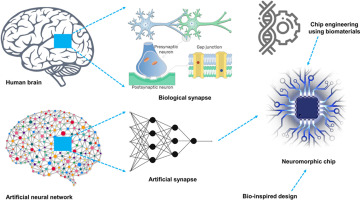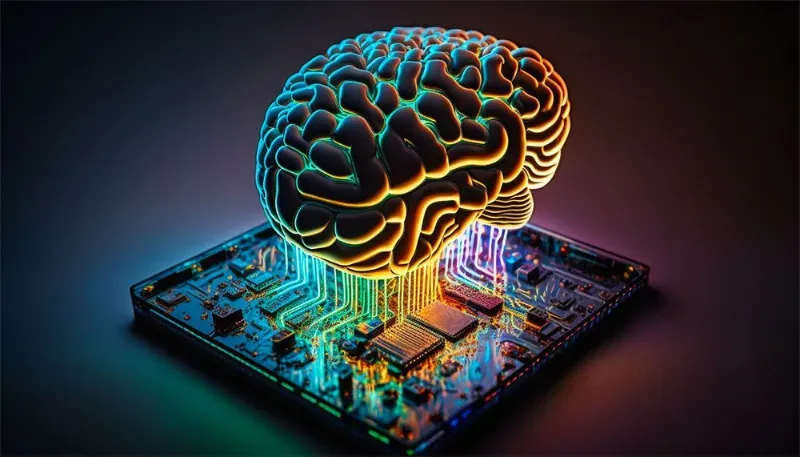- Published on
Unlocking the Secrets of the Human Brain A Deep Dive into Neuromorphic Computing
- Authors

- Name
- Adil ABBADI
Introduction

In the quest to create intelligent machines, scientists have long been fascinated by the most complex and mysterious computing system of all – the human brain. With an estimated 86 billion neurons and trillions of connections, the brain's neural networks process information with unparalleled efficiency and adaptability. Inspired by this biological marvel, researchers have been working on developing a new paradigm in computing: neuromorphic computing. In this article, we'll delve into the world of neuromorphic computing, exploring its principles, applications, and the potential to revolutionize artificial intelligence.
- The Biology Behind Neuromorphic Computing
- The Architecture of Neuromorphic Computers
- Applications of Neuromorphic Computing
- Challenges and Future Directions
- Conclusion
- The Future of AI: Embracing the Power of Neuromorphic Computing
The Biology Behind Neuromorphic Computing

To understand neuromorphic computing, it's essential to appreciate the biology of the brain. Neurons, the building blocks of the brain, communicate through electrical and chemical signals. Each neuron receives input from other neurons through synapses, which can be excitatory (strengthening the signal) or inhibitory (weakening the signal). The collective activity of neurons gives rise to complex behaviors, from perception and movement to thought and emotion.
In traditional computing, information is processed sequentially, with each operation following a strict set of rules. In contrast, the brain's neural networks operate in parallel, with each neuron processing multiple inputs simultaneously. This parallel processing enables the brain to learn, adapt, and generalize with remarkable efficiency.
The Architecture of Neuromorphic Computers

Neuromorphic computers aim to replicate the brain's neural networks using artificial neural networks (ANNs). These ANNs consist of interconnected nodes, or "neurons," that process and transmit information. The architecture of neuromorphic computers is designed to mimic the brain's neural networks, with the following key features:
- Parallel processing: Neuromorphic computers process multiple inputs simultaneously, enabling fast and efficient computation.
- Distributed processing: Information is processed across the network, rather than relying on a centralized processing unit.
- Adaptation and learning: Neuromorphic computers can learn and adapt through synaptic plasticity, adjusting the strength of connections between nodes based on experience.
To achieve this, researchers have developed various neuromorphic computing architectures, including:
- Spiking neural networks (SNNs): These networks use discrete spikes of activity to communicate between nodes, mimicking the brain's neural activity.
- Analog neural networks: These networks use continuous signals to process information, similar to the brain's analog neural signals.
Applications of Neuromorphic Computing

The potential applications of neuromorphic computing are vast and varied. Some examples include:
- Robotics: Neuromorphic computers can enable robots to learn and adapt in real-time, improving their ability to perform complex tasks.
- Image and speech recognition: Neuromorphic computers can process vast amounts of data quickly and efficiently, making them ideal for applications like facial recognition and speech recognition.
- Autonomous vehicles: Neuromorphic computers can enable autonomous vehicles to make rapid decisions in complex environments.
import numpy as np
# Example SNN implementation in Python
class Neuron:
def __init__(self, threshold):
self.threshold = threshold
self.spike_train = []
def process_input(self, input_spike):
if input_spike > self.threshold:
self.spike_train.append(1)
else:
self.spike_train.append(0)
# Create a simple SNN with two neurons
neuron1 = Neuron(0.5)
neuron2 = Neuron(0.8)
# Feed a spike train into the network
input_spike_train = [0.2, 0.4, 0.6, 0.8]
for spike in input_spike_train:
neuron1.process_input(spike)
neuron2.process_input(neuron1.spike_train[-1])
print(neuron2.spike_train)
Challenges and Future Directions

Despite the promising potential of neuromorphic computing, several challenges remain. These include:
- Scalability: Currently, neuromorphic computers are limited in scale, making it difficult to replicate the brain's complex neural networks.
- Power consumption: Neuromorphic computers require significant power to operate, which can limit their applicability in mobile or embedded systems.
- Understanding the brain: Despite decades of research, the workings of the human brain are still not fully understood, making it difficult to accurately mimic its neural networks.
To overcome these challenges, researchers are exploring new materials, architectures, and algorithms. The development of more efficient and scalable neuromorphic computing systems will be crucial to unlocking the full potential of this technology.
Conclusion
Neuromorphic computing has the potential to revolutionize the field of artificial intelligence, enabling machines to learn, adapt, and generalize with unprecedented efficiency. By mimicking the human brain's neural networks, researchers can create systems that excel in complex tasks, from robotics and computer vision to natural language processing and beyond. As we continue to push the boundaries of this emerging technology, we may uncover new secrets of the human brain and unlock the door to a new era of intelligent machines.
The Future of AI: Embracing the Power of Neuromorphic Computing
As we embark on this journey to create intelligent machines, it's essential to remember that the human brain is a remarkable, yet imperfect, system. By embracing the power of neuromorphic computing, we can create AI systems that not only mimic human intelligence but also learn from our strengths and weaknesses. The future of AI is bright, and it begins with unlocking the secrets of the human brain.
